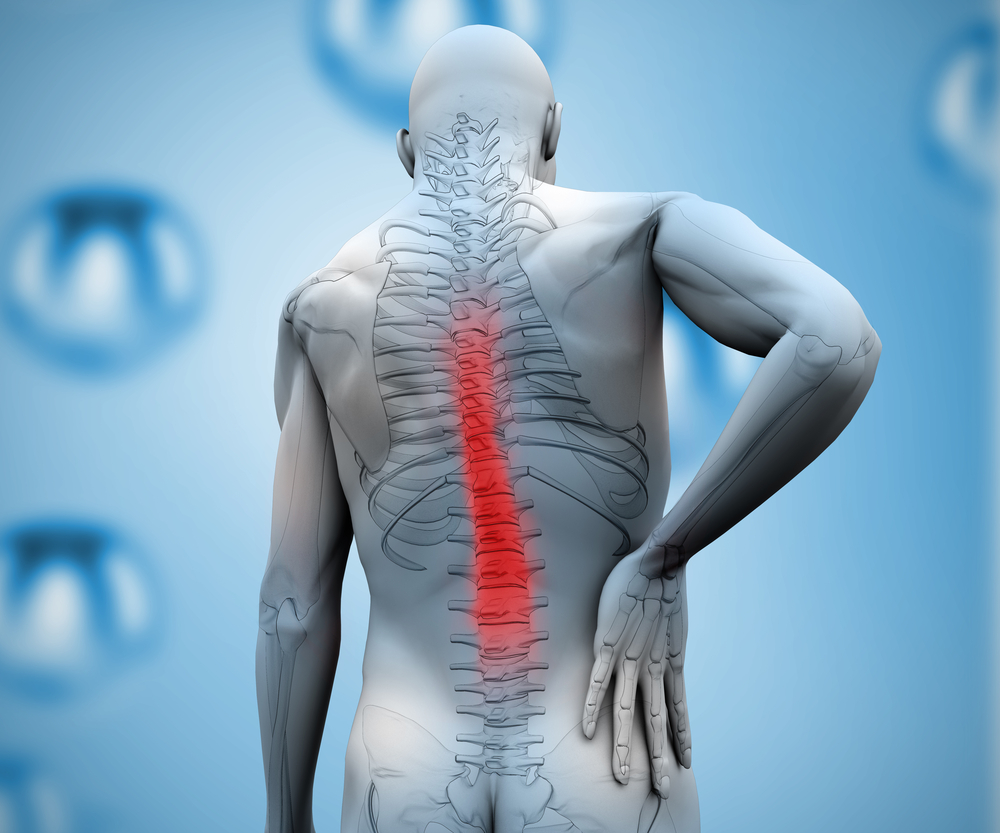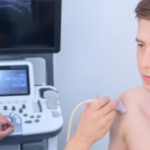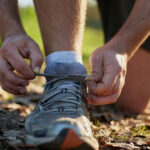Sciatica – article by Clive Lathey, DO. MSc (Sports Medicine)
My experience
On the 25th January 1989 I fell 35 feet. The accident happened in Sydney, Australia where between clinic jobs, I did some part-time work on a construction site. Unfortunately the scaffolding collapsed, resulting in my spending 6 weeks in hospital with 2 spinal vertebral fractures, a disc herniation, 5 broken ribs and extensive bruising. Thanks to a lot of physical therapy treatment and exercise rehabilitation, I returned to work 9 months later. Since this time, periodic treatment (Osteopathy +Physiotherapy roughly every 3 months) and a core programme has kept me largely pain free. I have rarely had time off work and have been able to take part in regular ultra distance cycling and ocean swimming events raising money for charity.
However, in late March 2019 I experienced my first ever episode of acute sciatica. At the Putney Clinic we regularly treat patients with sciatica and until I had suffered the same, I didn’t appreciate how painful it can be. I blame myself, a particularly busy period resulted in my neglecting my exercises and treatment programme. My left sided sciatica took 6 weeks to recover, including a week off work. I was able to have an MRI scan which showed a disc bulge at the base of the spine on the left. Fortunately, 95% of disc bulges don’t need surgery and a combination of medication, physical therapy, gentle exercise and light stretches resolved the sciatica. My memory and experience of sciatic pain will definitely help motivate me to do my core exercises regularly and have intermittent, preventative osteopathic and physiotherapy treatment.

Side view model of human spinal vertebrae, disks, and spinal cord nerve.
Sciatica
The sciatic nerve is the largest nerve in the body, about the size of your little finger. It arises in the low back ( both left and right) and passes through the buttock, posterior thigh, calf and into the foot. Sciatica is not a condition it is a symptom. Sciatica affects around 40% of the population and most instances occur in the fourth and fifth decades of life. The major cause is a disc bulge (80% causes). Discs are the cartilage pads with a gel centre that sit between the bony vertebrae. They can bulge or prolapse like a bicycle tyre where the inner tube bulges through it. Swollen, inflamed spinal joints (20%) can also irritate the sciatic nerve.
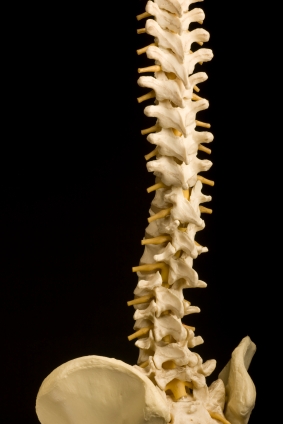
Symptoms
The level of pain varies from dull and aching to acute and burning. There is often but not always, low back pain. The pain is normally located in the posterior thigh and calf. Numbness and pins + needles are often felt in the foot. Weakness although not common, can result in foot drop and difficulty walking. Coughing, sneezing and sitting usually aggravates the pain, while gentle mobility exercises and walking relieves it.
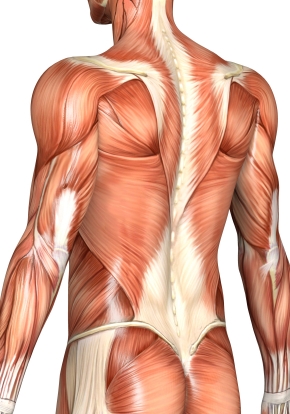
Treatment
Early Stage
- Aim in the acute stage ( onset to 72 hours later) is to reduce inflammation which will help reduce pain and improve mobility.
- Ice packs- 20-30 mins -3 x day- Low back + buttock
- Anti-inflammatories- Ibuprofen ( follow guidelines on the packet-do not exceed recommended dose)
- Prescriptive medication from your GP if pain is extreme
- Intermittent bed rest – gentle periods of walking
- Gentle osteopathic or physiotherapy treatment
Mid Stage ( 2-4 weeks )
- Consult GP – different medication + appropriate pain killers if pain level high
- Osteopathic and physiotherapy treatment
- Start low level core and mobility exercises-
- Keep mobile
Chronic ( 4-6 weeks +)
- GP – Further medication if no improvement
- GP referral to pain consultant- Epidural + facet joint injections- followed by exercise rehabilitation.
- Cognitive behavioural therapy-manage pain
- Osteopathic + physiotherapy treatment
- Surgery – Laminectomy or Discectomy- Usually only 5% of patients.
Causes
- 80% Disc bulges or herniations
- 20% Inflamed spinal joints
- Spinal stenosis
- Spondylolisthesis
- Tumour
- Infection
- Cauda Equina
- Smoking
- Obesity
- Sedentary life
Investigation
- MRI Scans and CT scans – Gold standard
- X-rays- Only look at bone tissue. Not discs and nerves which are soft tissue.
Summary
The majority of episodes of sciatica recover with treatment and medication and do not require surgery. Avoid being too sedentary and keep mobile. Have periodic preventative treatment from an osteopath or physiotherapist. Keep fit and active with an emphasis on core exercises, posture, weight management, ergonomics and general back care.
Clive Lathey is a registered Osteopath & Sports Scientist, founder & director of the Putney Clinic of Physical Therapy. Read more about Clive here. To find out more about the treatment the clinic offers for sciatica and other types of pain, do check out the Putney Clinic’s Osteopathy Services, Physiotherapy Services and Massage Services. Contact us on 020 8789 3881 or by email at info@putneyclinic.co.uk to discuss your needs and find out how we can be of help.

